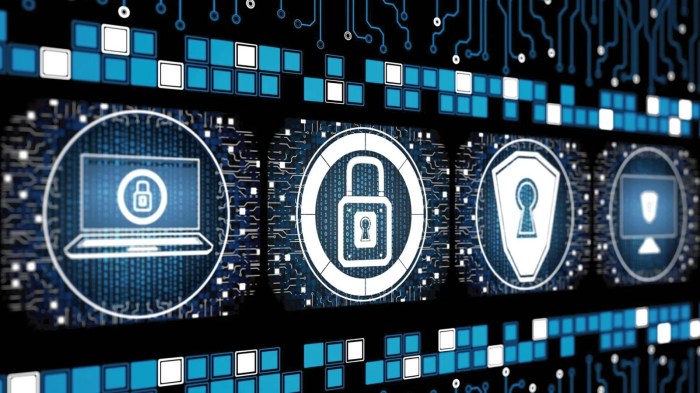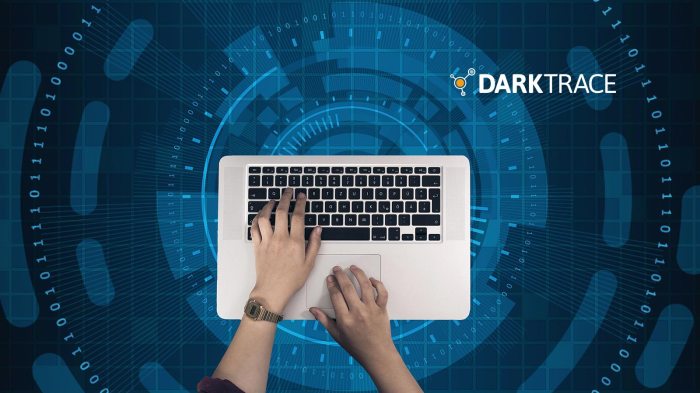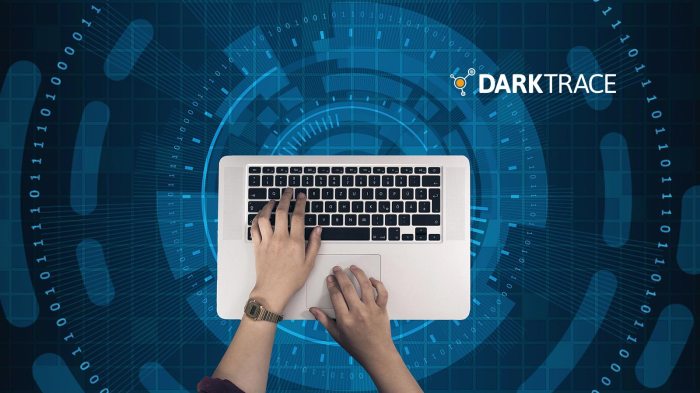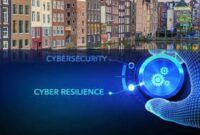Darktrace unveils critical infrastructure defence – Darktrace Unveils Critical Infrastructure Defense, a groundbreaking solution designed to safeguard our most vital systems from the ever-evolving threat landscape. In an era where cyberattacks are becoming increasingly sophisticated and targeted, critical infrastructure, including power grids, water treatment plants, and transportation networks, faces unprecedented vulnerabilities.
Darktrace’s AI-powered defense system is specifically tailored to address these challenges, offering a unique approach to protecting our interconnected world.
The solution leverages cutting-edge machine learning algorithms to identify and respond to threats in real-time, even those that are previously unknown. By continuously learning and adapting to evolving attack patterns, Darktrace’s platform provides an intelligent and proactive defense mechanism, safeguarding critical infrastructure from the insidious threat of cyberattacks.
Darktrace’s Critical Infrastructure Defense Solution

In today’s digital landscape, critical infrastructure is increasingly vulnerable to cyberattacks. From power grids and water treatment plants to transportation networks and financial institutions, these systems are essential for our daily lives and economic well-being. Darktrace’s Critical Infrastructure Defense solution is designed to proactively protect these vital assets from sophisticated cyber threats.
Core Functionalities of Darktrace’s Critical Infrastructure Defense Solution
Darktrace’s Critical Infrastructure Defense solution is built on the foundation of its self-learning AI technology, which enables it to automatically identify and respond to threats in real-time. The solution provides a comprehensive suite of capabilities to protect critical infrastructure, including:
- Anomaly Detection:Darktrace’s AI engine analyzes network traffic and system behavior to identify anomalies that may indicate malicious activity. This includes detecting unusual patterns in network connections, data transfers, and user activity.
- Threat Hunting:Darktrace’s AI engine actively hunts for threats that may be hidden or disguised within the network. It uses advanced machine learning algorithms to identify and investigate suspicious activity, even if it does not fit traditional threat signatures.
- Automated Response:Darktrace’s AI engine can automatically respond to threats by isolating infected systems, blocking malicious traffic, and alerting security teams. This reduces the time it takes to contain attacks and minimizes the impact on critical operations.
- Threat Intelligence:Darktrace’s AI engine continuously gathers and analyzes threat intelligence from a variety of sources, including open-source intelligence, industry reports, and its own global network of sensors. This enables it to stay ahead of emerging threats and adapt its defenses accordingly.
Technology Behind Darktrace’s Critical Infrastructure Defense Solution
Darktrace’s Critical Infrastructure Defense solution is powered by a unique combination of technologies, including:
- Unsupervised Machine Learning:Darktrace’s AI engine uses unsupervised machine learning algorithms to learn the normal behavior of networks and systems. This allows it to detect anomalies without requiring predefined rules or signatures.
- Pattern Recognition:Darktrace’s AI engine uses advanced pattern recognition algorithms to identify subtle patterns in network traffic and system behavior that may indicate malicious activity. These patterns can be difficult for traditional security tools to detect.
- Cyber Immune System:Darktrace’s AI engine is designed to mimic the human immune system, automatically detecting and responding to threats in real-time. This enables it to adapt to new threats and evolve its defenses over time.
Examples of Darktrace’s Critical Infrastructure Defense Solution in Action
Darktrace’s Critical Infrastructure Defense solution has been deployed in a wide range of industries, including:
- Energy:Darktrace has helped energy companies protect their critical infrastructure from cyberattacks that could disrupt power generation, transmission, and distribution. For example, Darktrace detected and prevented a ransomware attack on a major energy company, preventing a potential outage that could have affected millions of customers.
- Water:Darktrace has helped water treatment plants protect their critical infrastructure from cyberattacks that could compromise water quality and safety. For example, Darktrace detected and stopped a malicious actor from gaining access to a water treatment plant’s control system, preventing a potential contamination event.
- Transportation:Darktrace has helped transportation networks protect their critical infrastructure from cyberattacks that could disrupt traffic flow and safety. For example, Darktrace detected and prevented a cyberattack on a major transportation authority, preventing a potential disruption to train services.
Key Features and Capabilities
Darktrace’s Critical Infrastructure Defense solution is a comprehensive approach to safeguarding essential systems and operations. It leverages cutting-edge AI technology to detect and respond to threats in real-time, providing a critical layer of protection for organizations in critical sectors.The solution’s capabilities are designed to address the unique challenges faced by critical infrastructure environments, such as the presence of legacy systems, complex interconnected networks, and the need for continuous operation.
Zero-Day Threat Detection and Response
Darktrace’s AI engine analyzes network traffic and device behavior in real-time, identifying anomalies that could indicate the presence of a zero-day threat. The solution can detect attacks that traditional security solutions might miss, including those using previously unknown vulnerabilities or attack techniques.
This proactive approach enables organizations to identify and respond to threats before they can cause significant damage.
Key Features of Darktrace’s Critical Infrastructure Defense Solution
Darktrace’s critical infrastructure defense solution incorporates several key features that contribute to its effectiveness:
- Self-Learning AI:Darktrace’s AI engine continuously learns and adapts to the unique characteristics of the protected environment. This allows it to identify subtle anomalies that might indicate a threat, even in complex and dynamic environments.
- Automated Threat Detection:The solution automatically detects and prioritizes threats based on their potential impact and severity. This allows security teams to focus their attention on the most critical issues, ensuring a timely and efficient response.
- Real-Time Threat Response:Darktrace’s solution can automatically isolate infected devices or systems, preventing the spread of malware or other malicious activity. This real-time response capability minimizes the impact of attacks and helps to maintain operational continuity.
- Comprehensive Threat Coverage:Darktrace’s solution protects against a wide range of threats, including malware, ransomware, phishing attacks, insider threats, and industrial control system (ICS) attacks. This broad coverage ensures that organizations are protected from the most common and emerging threats.
- Integration with Existing Security Systems:Darktrace’s solution integrates seamlessly with existing security systems, such as firewalls, intrusion detection systems (IDS), and security information and event management (SIEM) platforms. This allows organizations to leverage their existing security infrastructure and maximize the effectiveness of their overall security posture.
Discover the crucial elements that make cyber attacks european governments increase concerns public sector defenses the top choice.
Specific Capabilities for Critical Infrastructure Protection
Darktrace’s critical infrastructure defense solution offers specific capabilities that are particularly relevant for protecting essential systems and operations:
- ICS Security:The solution can monitor and protect industrial control systems (ICS) against cyberattacks, including those targeting critical infrastructure components like power grids, water treatment plants, and oil and gas pipelines.
- OT/IT Convergence:Darktrace can effectively bridge the gap between operational technology (OT) and information technology (IT) environments, providing a unified security solution for both. This is essential for protecting critical infrastructure, as OT and IT systems are increasingly interconnected.
- Resilience and Recovery:Darktrace’s solution helps organizations to quickly recover from attacks by identifying and isolating compromised systems and by providing insights into the nature and scope of the attack. This enables faster recovery and minimizes downtime.
Benefits for Critical Infrastructure Organizations
Darktrace’s critical infrastructure defense solution offers significant advantages for organizations responsible for maintaining essential services, such as power grids, water treatment facilities, and transportation networks. These benefits extend to enhancing security posture, reducing risk, and ensuring operational resilience.
Improved Security Posture
Implementing Darktrace’s solution significantly improves the security posture of critical infrastructure organizations. The solution’s self-learning AI algorithms continuously analyze network traffic and identify anomalies, enabling proactive threat detection and response.
- Real-time threat detection:Darktrace’s AI can detect threats in real-time, even those that are unknown or previously unseen. This proactive approach helps organizations prevent breaches before they can cause significant damage.
- Automated threat response:The solution can automatically respond to threats, such as isolating infected devices or blocking malicious activity. This reduces the time it takes to contain threats and minimizes the impact of attacks.
- Reduced reliance on human intervention:Darktrace’s AI can handle many security tasks, freeing up security teams to focus on more strategic initiatives. This helps organizations make the most of their security resources.
Reduced Risk
Darktrace’s solution helps critical infrastructure organizations reduce their risk of cyberattacks. The solution’s ability to detect and respond to threats in real-time helps organizations prevent breaches and mitigate the impact of attacks.
- Reduced likelihood of successful attacks:Darktrace’s AI can identify and respond to threats before they can cause significant damage, reducing the likelihood of successful attacks.
- Minimized downtime:By quickly identifying and containing threats, Darktrace helps organizations minimize downtime and avoid disruptions to critical services.
- Improved compliance:Darktrace’s solution can help organizations comply with industry regulations and standards, such as the NIST Cybersecurity Framework.
Real-world Examples
Numerous critical infrastructure organizations have successfully implemented Darktrace’s solution and experienced tangible benefits.
- A major energy companyin the United States used Darktrace to detect and stop a sophisticated cyberattack targeting its control systems. The attack was identified within minutes, and the company was able to prevent significant damage to its operations.
- A large water utilityin the United Kingdom used Darktrace to detect and stop a ransomware attack targeting its critical infrastructure. The attack was identified and contained before it could spread, preventing a major disruption to water services.
Case Studies and Success Stories

Darktrace’s Critical Infrastructure Defense solution has been implemented successfully across a range of critical infrastructure sectors, demonstrating its effectiveness in protecting against evolving cyber threats. These case studies highlight the solution’s ability to detect and respond to sophisticated attacks, mitigating potential disruptions and safeguarding critical operations.
Real-World Examples of Darktrace’s Impact
The following table showcases a selection of case studies that illustrate the practical benefits of Darktrace’s Critical Infrastructure Defense solution:
| Company Name | Industry | Challenge | Solution | Outcome |
|---|---|---|---|---|
| Energy Company | Energy | Detection of malware targeting industrial control systems (ICS) | Darktrace’s AI-powered anomaly detection identified suspicious activity on the ICS network, alerting security teams to the threat. | The company successfully prevented a potential cyberattack, mitigating the risk of disruption to energy production and distribution. |
| Water Utility | Water and Wastewater | Unauthorized access to critical water treatment systems | Darktrace’s self-learning AI identified unusual network behavior associated with unauthorized access attempts. | The water utility was able to quickly isolate the affected systems and prevent any potential compromise of water treatment operations. |
| Transportation Authority | Transportation | DDoS attacks targeting the transportation authority’s website and online ticketing systems | Darktrace’s AI detected and responded to the DDoS attacks in real-time, mitigating the impact on critical services. | The transportation authority avoided service disruptions and ensured the continued availability of its online ticketing system. |
Industry Landscape and Competitive Analysis: Darktrace Unveils Critical Infrastructure Defence
The critical infrastructure cybersecurity market is a rapidly evolving landscape with a wide array of solutions vying for a share of the market. This analysis delves into the competitive landscape, examining the strengths and weaknesses of various solutions and highlighting the current trends and challenges faced by the industry.
Comparison of Darktrace’s Solution with Competitors
Darktrace’s Critical Infrastructure Defense solution stands out in the market for its unique approach to AI-driven threat detection and response. It employs self-learning algorithms that continuously adapt to the evolving threat landscape, identifying anomalies and automatically responding to threats. This sets it apart from traditional security solutions that rely on pre-defined rules and signatures, which are often ineffective against sophisticated and unknown attacks.
- Traditional Security Solutions:These solutions typically rely on signature-based detection, firewalls, intrusion detection systems (IDS), and antivirus software. While effective against known threats, they often struggle to identify and respond to zero-day attacks and advanced persistent threats (APTs) that exploit vulnerabilities not yet known or documented.
Their effectiveness relies on predefined rules and signatures, which can be bypassed by attackers.
- Next-Generation Security Solutions:These solutions incorporate advanced technologies such as behavioral analysis, machine learning, and threat intelligence to enhance threat detection and response capabilities. However, many of these solutions still require significant manual configuration and tuning, which can be time-consuming and resource-intensive.
- Security Information and Event Management (SIEM):SIEM solutions aggregate and analyze security data from various sources to provide insights into security events. However, they often struggle to detect and respond to threats in real-time, requiring human analysts to investigate alerts and take action.
Strengths and Weaknesses of Competing Solutions, Darktrace unveils critical infrastructure defence
- Strengths:Many competing solutions offer comprehensive security features, including threat intelligence, vulnerability management, and incident response capabilities. Some solutions also leverage automation and orchestration to streamline security operations.
- Weaknesses:Traditional solutions often lack the ability to adapt to evolving threats, relying heavily on pre-defined rules and signatures. Many solutions also require significant manual configuration and tuning, making them time-consuming and resource-intensive to implement and manage. Additionally, some solutions may struggle to provide real-time threat detection and response capabilities, leading to delays in incident response.
Trends and Challenges in the Critical Infrastructure Cybersecurity Market
- Increasing Sophistication of Attacks:Cybercriminals are constantly evolving their tactics, employing more sophisticated techniques such as ransomware, APTs, and zero-day exploits. This necessitates advanced security solutions that can adapt to the ever-changing threat landscape.
- Growing Complexity of IT Infrastructure:Critical infrastructure organizations often operate complex and interconnected IT environments, making it challenging to manage security effectively. The increasing adoption of cloud computing, Internet of Things (IoT) devices, and operational technology (OT) systems further complicates the security landscape.
- Shortage of Cybersecurity Professionals:The industry faces a significant shortage of skilled cybersecurity professionals, making it difficult for organizations to find and retain qualified personnel. This shortage can lead to gaps in security coverage and delayed incident response.
- Regulatory Compliance and Standards:Critical infrastructure organizations face stringent regulatory requirements and industry standards, such as the National Institute of Standards and Technology (NIST) Cybersecurity Framework and the North American Electric Reliability Corporation (NERC) Critical Infrastructure Protection (CIP) standards. Meeting these requirements can be a significant challenge for organizations.
The Future of Critical Infrastructure Cybersecurity
The landscape of critical infrastructure cybersecurity threats is constantly evolving, becoming more sophisticated and complex. The increasing reliance on interconnected systems and the rise of new technologies like artificial intelligence (AI) and the Internet of Things (IoT) create new vulnerabilities that adversaries are quick to exploit.
The Role of AI and Machine Learning
AI and machine learning are playing an increasingly critical role in protecting critical infrastructure. These technologies can analyze vast amounts of data, identify patterns, and detect anomalies that might otherwise go unnoticed. AI-powered security solutions can help organizations:
- Improve threat detection and response: By analyzing network traffic, system logs, and other data sources, AI algorithms can identify suspicious activities and potential threats in real-time, allowing for faster and more effective response.
- Automate security tasks: AI can automate repetitive tasks like vulnerability scanning and patch management, freeing up security teams to focus on more strategic initiatives.
- Reduce the risk of human error: AI-powered systems can help to mitigate the risk of human error by automating tasks and identifying potential threats that might be missed by human analysts.
Future of Critical Infrastructure Cybersecurity Solutions
The future of critical infrastructure cybersecurity solutions will be characterized by:
- Increased automation and orchestration: AI and machine learning will play a more prominent role in automating security tasks, reducing the burden on human operators and enabling faster response times.
- Enhanced threat intelligence: Organizations will rely on advanced threat intelligence platforms to gain deeper insights into the latest threats and vulnerabilities. This will allow for more proactive security measures and better threat mitigation strategies.
- Zero-trust security: The concept of zero-trust security will become increasingly important, where organizations assume that all users and devices are potentially untrusted and require strict authentication and authorization. This will help to prevent unauthorized access and data breaches.
- Integration with operational technology (OT): Security solutions will need to be integrated with OT systems to provide comprehensive protection for critical infrastructure. This will require a deep understanding of OT environments and the unique security challenges they present.
“The future of critical infrastructure cybersecurity is about building a more resilient and adaptable security posture. This requires a combination of advanced technologies, strong security practices, and a skilled workforce.”





